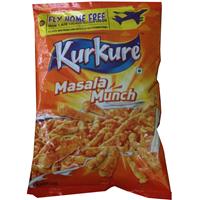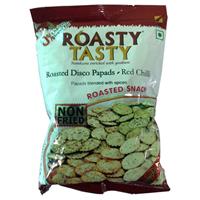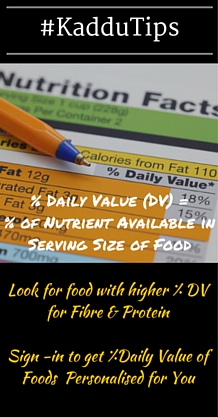
Kurkure Masala Munch
Products in ‘Crispies & Namkeen’ category range from 0.5 - 4

Current Product

- "Zero Trans Fat" & ''Trans Fat free'' does not always mean NO Trans FatTrans Fats are one type of fatty acid formed during the food manufacturing process, which when consumed tend to increase the blood cholesterol level.
A claim of the term “Trans-fat free” or Zero Trans Fat on a food label means, where trans-fat is less than 0.2 g per serving of food, this is as per the current Indian food laws.
Therefore, it is important to check the serving size of the product you are consuming, have more than one serving and the nutrient will pile up. - Know your Food - Black SaltBlack salt offers some health benefits but remember its primary content is sodium chloride like the table salt.Manufacturers use distinctive qualities of the many varieties of salts mainly to enhance the flavors and finish of foods. Raw salts like black salt is also recommended for many health issues such as constipation, indigestion, heartburn, bloating, flatulence, goiter, hysteria, poor vision, anemia.The Natural Black salt contains minerals like sulfates, sulfides, iron and magnesium.
- Know your ingredient- DextroseWhite table sugar often gets the most attention because of its wide use. But other forms of sugar like dextrose also deserve attention.Dextrose is a simple sugar or monosaccharides. The words "glucose and "dextrose" are often used interchangeably. Being simple sugar, it has the ability to raise the acidity of your blood, and has been linked with high cholesterol, heart disease, and obesity.Read more about the many different sources of sugar which includes Dextrose, Invert Syrup, Maltodextrin, Honey...
- Loaded with FATEnergy available from a food is based on Carbohydrate, Fat and Protein present in it. The ideal ratio of energy obtained from these components is 65% from Carbohydrates, 20% from Fat and 15% from protein.More than 30% of energy available in this product is from FAT, which is 50% more than the ideal amount. Foods with High Fat are often loaded with Saturated Fat and Trans Fat both of which contribute to life style diseases including diabetes, obesity or Cardiovascular.Again, one should not go on the other extreme of having low fat diet as some amount of fat is required for various bodily functions like storing of energy, absorption of fat soluble vitamins such Vitamin A, D, E and K, insulate us and protect vital organs besides synthesis of specific hormones and cell membrane formation.Thus, it is important to eat food which has each nutrient in the right quantity and limit food products that give too much of one nutrient.
Disclaimer:Product Analysis is based on general practices in the field of Nutrition. Please check with or consult a qualified and licensed medical professional for its suitability to you.













